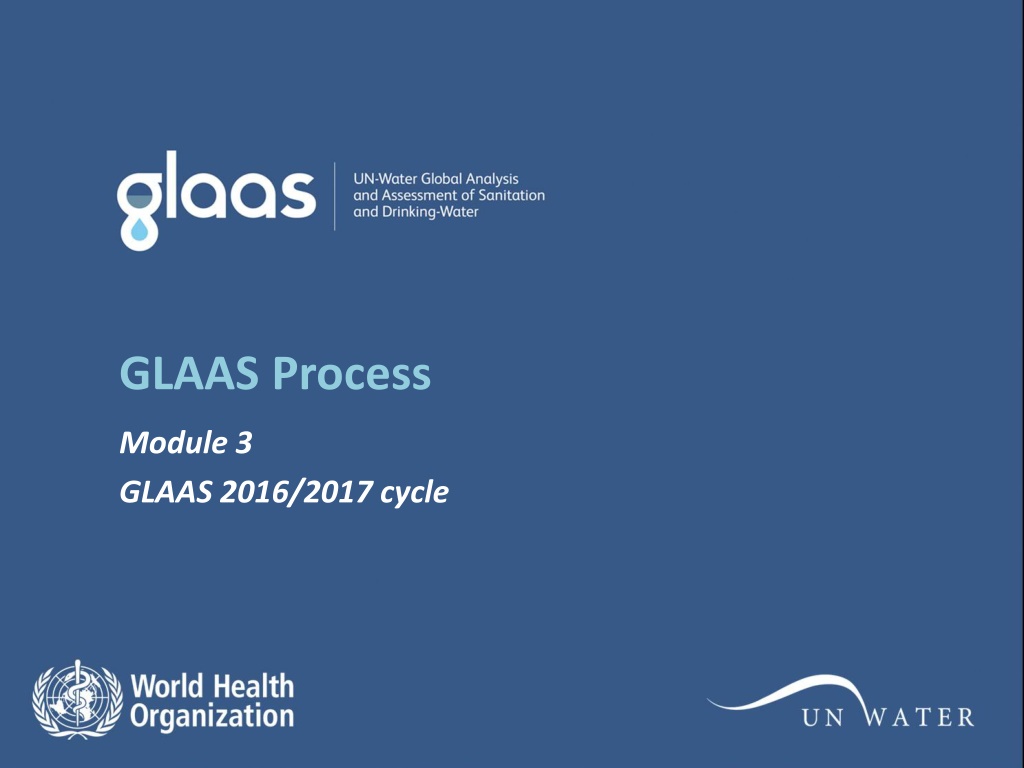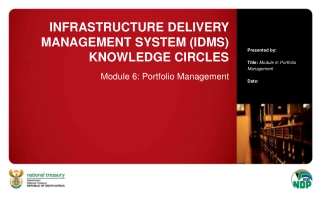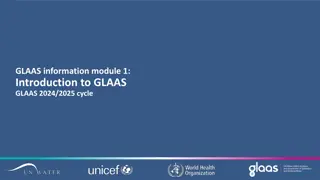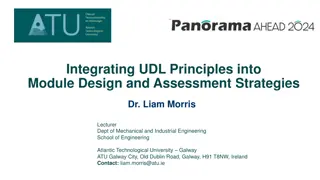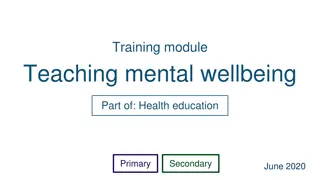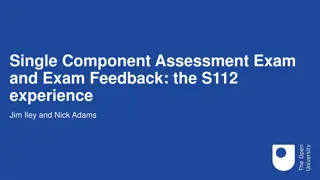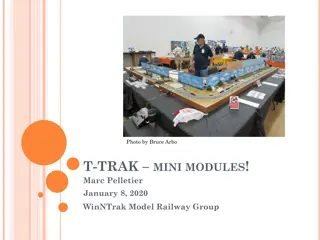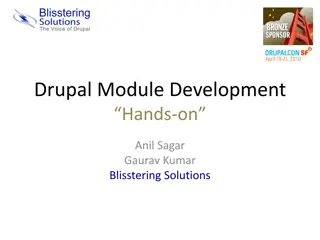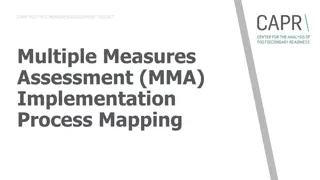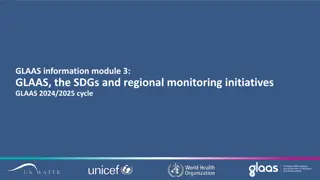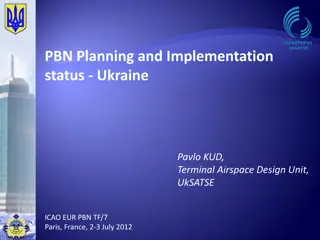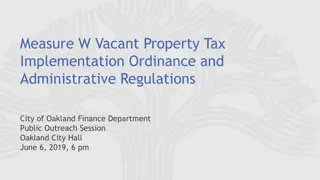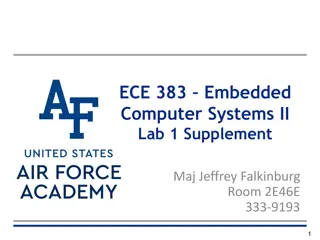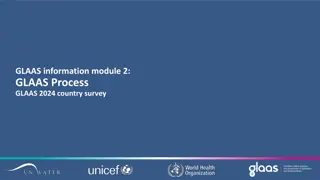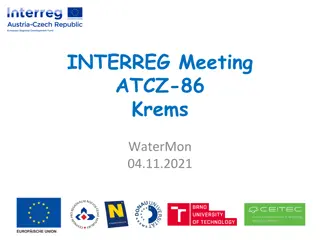GLAAS Process Module 3 Overview and Implementation Steps
This module provides an overview of the proposed process for implementing GLAAS at the country level, focusing on data collection through Fall 2016. It covers various stages such as introductory meetings, decision-making to participate, pre-data collection phase, data presentation and validation, and feedback reporting. The process includes engaging key stakeholders, coordinating responses to surveys, gathering relevant documents, conducting workshops, and presenting findings at multi-stakeholder meetings.
Download Presentation

Please find below an Image/Link to download the presentation.
The content on the website is provided AS IS for your information and personal use only. It may not be sold, licensed, or shared on other websites without obtaining consent from the author. Download presentation by click this link. If you encounter any issues during the download, it is possible that the publisher has removed the file from their server.
E N D
Presentation Transcript
GLAAS Process Module 3 GLAAS 2016/2017 cycle
Overview This module will give an overview of the proposed process for implementing GLAAS at country level Data collection will be through Fall 2016
Introductory Meetings 1 Decision to participate? 2 Pre-data collection 3 Suggested GLAAS Process Data 4 Collection Data 5 Validation 6 Sign-off Reporting & Feedback 7
Introductory Meetings 1 Introductory Meetings Decision to participate? 2 Meetings with key stakeholders and government representatives Pre-data collection 3 Data 4 Collection Data 5 Validation 6 Sign-off Reporting & Feedback 7
Introductory Meetings 1 Decision to Participate? Decision to participate? 2 Decision by government to participate in GLAAS? Pre-data collection 3 Data If yes: 4 Collection Identify a National Focal Person Data 5 Validation Identify resource needs from WHO and outline brief work plan 6 Sign-off Reporting & Feedback 7
Introductory Meetings 1 Pre Data-Collection Phase Decision to participate? 2 Gather copies of any relevant sector documents, strategies and plans Pre-data collection 3 Data Kick-off workshop to present GLAAS to government and key stakeholders 4 Collection Data 5 Validation 6 Sign-off Reporting & Feedback 7
Introductory Meetings 1 Data Collection Phase Decision to participate? 2 National Focal Point coordinates response to GLAAS survey Pre-data collection 3 Data 4 Collection Data 5 Validation 6 Sign-off Reporting & Feedback 7
Introductory Meetings 1 Data Presentation & Validation Decision to participate? 2 Quality assurance and review of results Pre-data collection 3 Data Findings are presented at multi- stakeholder meeting 4 Collection Data 5 Validation 6 Sign-off Reporting & Feedback 7
Introductory Meetings 1 Government Sign-Off Decision to participate? 2 The Government reviews the data and signs off on the results before submission Pre-data collection 3 Data 4 Collection Data 5 Validation 6 Sign-off Reporting & Feedback 7
Introductory Meetings 1 Reporting and Feedback Decision to participate? 2 Publication of data online Pre-data collection 3 Production of Country Highlights Data 4 Collection Feedback and evaluation of process Data 5 Validation 6 Sign-off Reporting & Feedback 7
Additional Forms to be Submitted Data release consent form Data collection process form Feedback form
Examples of Best Practice Kenya and Ethiopia
Kenya: GLAAS Process in 2014 Following the GLAAS regional meeting in Burkina Faso in 2013, delegates from Kenya held an inception & validation meeting, with the support of WHO, to brief WASH Partners on the survey tools Sector Ministries and WASH stakeholders came together in a joint Meeting during inception of GLAAS processes The focal point for GLAAS was in the Ministry of Health WASH Hub GLAAS processes were strongly supported by the Director of Public Health WASH stakeholders and the line ministry worked together to respond to the 2014 GLAAS survey
Kenya: Lessons Learnt from 2014 More time and resources should be allocated to sensitize partners and sector Ministries on the GLAAS process, with a clear action plan assigned to every member The GLAAS process has helped to inform new strategies and the development of a WASH investment plan
Ethiopia: GLAAS Process 2014 GLAAS data collection was led by WHO with inputs from sector Ministries Used existing available data provided by relevant sector Ministries (Health and Water) Strong representation of Ministers at the SWA High Level Meeting
Ethiopia: Lessons Learnt from 2014 A larger platform is needed for GLAAS to increase stakeholder ownership and input GLAAS processes should be aligned with existing sector-wide coordination mechanisms and review processes In the future, GLAAS processes should be managed by a National WASH Coordination Structure
Thank you! For additional information or assistance please contact glaas@who.int
